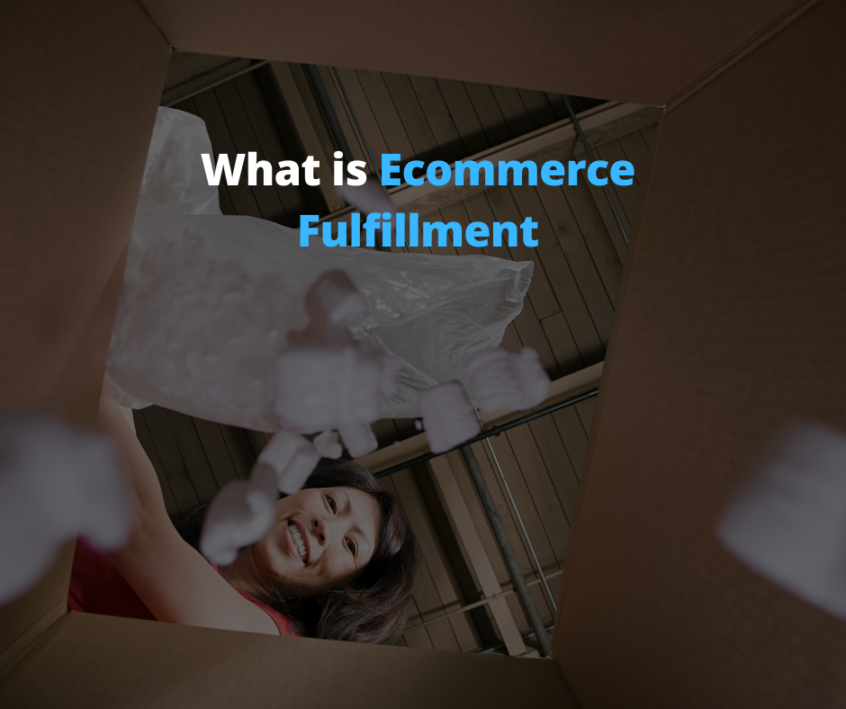
Effective order fulfillment is the secret sauce of some of the leading ecommerce enterprises. A brand without an appropriate ecommerce fulfillment strategy is not going to cultivate customers or earn their loyalty. Other improvements like Instagram advertising, fancy website designs, and persuasive email copy campaigns will count for little if customers cannot get their orders delivered on time and in good shape.
Order fulfillment as a driver of brand revenues
Customer expectations include timely deliveries of high-quality products which must be intact. As the needs and expectations of customers have risen, so has the need to polish-up ecommerce fulfillment procedures. Successful deliveries mean more orders and more orders mean greater profitability. The brands that are not able to guarantee 2-day shipping and a great delivery experience for their customers are not going to be attractive to shoppers today.
When ecommerce fulfillment is executed well, logistics turn from being a cost center to a revenue driver. This is the key to improving conversion rates and exponentially improving repeat sales. Some research indicates significant benefits associated with the use of professional order fulfillment services including:
- Close to 20% reduction in shopping cart abandonment rate
- Reduction of shipping costs by 25%
- Bottom-line cost savings of at least 10%
- A nearly two-fold increment in average order value
- Labor savings of over 100 hours a week
- Nearly 75% worth of reductions of shipping costs in the USA
- A three-fold increase in growth rates
Demystifying the nature and function of fulfillment services
There are common misconceptions surrounding the nature and function of ecommerce fulfillment services. This can be confusing for businesses that are looking for the best option. Here are a few myths and the facts debunking them:
- Fulfillment centers must be within the vicinity of your business: It is not true that you need a fulfillment center in close proximity to your location. You should select fulfillment centers that are as close to your customers as possible. Your location is of secondary importance to the customer, particularly if they are ordering online and expect all the benefits of remote shopping. Use data about your customer and work out the best fulfillment center for them based on analysis. The relevant data may include order history, destination zip codes, shipping zones, average costs, and delivery timescales. Your aim should be to achieve the fastest deliveries at the lowest cost possible.
- Rural fulfillment centers are the most cost-effective: It is not true that rural fulfillment centers are guaranteed to save money. Although they may appear to be cheap, their lack of proximity to densely populated areas is an invitation for high shipping costs. Most customers live in big cities and that is where you should look for a fulfillment center. The closer the inventory is to the shipping destination, the better the fulfillment rates. Costs can vary significantly between zones depending on how far away they are from the destination. This is an important decision when trying to retain lifelong customers. Surveys have indicated that nearly 40% of customers have given up on retailers because of poor delivery practices.
- There is practically no difference between ecommerce fulfillment centers and warehousing: There are important differences between warehousing and ecommerce fulfillment centers. Warehousing is just one aspect of ecommerce fulfillment. The distinction that fulfillment centers have is that they are designed to quickly turn over inventory. They are not designed for long-term storage like a warehousing facility. The warehouse works best if you have plenty of products that are not likely to sell quickly. Do not waste prime space in the fulfillment center when what you need is an on-demand warehousing solution or unit. If you have fast-selling products, there is no realistic option but a fulfillment center.
Remember that the fulfillment company will charge a separate storage fee for every item. This reflects the premium placed on space in these centers. A storage-only center is much cheaper, but more suited to products that are going to sit around for some time. Businesses with a low SKU count (probably selling between 1 and 20 products in total should consider using an ecommerce fulfillment center. This holds even if about half of their products are not classified as “hot sellers”. In contrast, companies that sell a wide variety of products in a short space of time (such as those with a mixture of products with a total rating of over 10,000 SKUs) may still opt not to use ecommerce fulfillment centers because of the high warehousing fees. The only justification would be if all the products are selling quickly.
- Fulfilling ecommerce by yourself is the cheaper option: It is not always cheaper to fulfill the orders yourself. Sometimes there are cost-savings associated with doing the fulfillment on an in-house basis. This is particularly true for businesses that are just starting in ecommerce and therefore have relatively few orders (Typically, less than 50 a month). The business can manage the packaging and transportation to the post office without seriously hampering the operations of this as-yet-small business. This will change the moment that order fulfillment starts to take up most of your time.
Do not assume that your business will remain the same as when it started. There are direct and indirect costs associated with a DIY approach to order fulfillment. For example, you will have to contend with increasing shipping rates at the post office. Moreover, you will need labor to handle multiple requests. Then there are the opportunity costs of focusing on order fulfillment instead of working on other critical aspects of your business e.g., sales, administration, accounting, and public relations.
The time for making decisions is when your business is large enough to purchase land, purchase a warehouse management system, or even lease a substantial warehouse. Think about the comparative costs and hassle of handling one shipment using your in-house system as opposed to working with 3PL service providers. Remember that these providers will have multiple channels and locations that you cannot compete with as an individual business. The sheer geographic footprint of your operations is another important consideration. Using a 3PL can significantly reduce the average costs of shipping. It will certainly improve the timelines for your delivery which is a welcome bonus for your customers.
Regardless of the size of the business, there will be many costs associated with self-fulfillment. Do not make the mistake of overlooking these costs when calculating the total fulfillment costs. It will help to clarify your decision-making.
Wrapping up
The basic tenet of ecommerce fulfillment is the delivery of merchandise after it has been ordered by a customer using online channels. It is a complicated but critical process. This part of the supply chain will involve processing orders, engaging manufacturers or suppliers, storing inventory, packing boxes, picking items, and then transporting them to the destination.
You can handle this process in the early stages of your business cycle before progressing to using a 3PL service provider as your orders increase. Think about the distinctions between warehousing (for long-term slow-selling items) and ecommerce fulfillment (for short-term fast-selling items). Above all, you should not follow myths such as the guaranteed cost-savings of using a rural order fulfillment center or doing it all on your own.





3 Comments on “What is Ecommerce Fulfillment?”
I love to work abroad with mu skills.. i want to learn and explore
I have a customer service experience and I have been in the industry for over 6 years now. Is started my career as an agent, senior agent, customer service manager, network relationship manager and recently a team leader for US projects. I want to enhance my career by joining your company.
Interested, I am in South Africa.